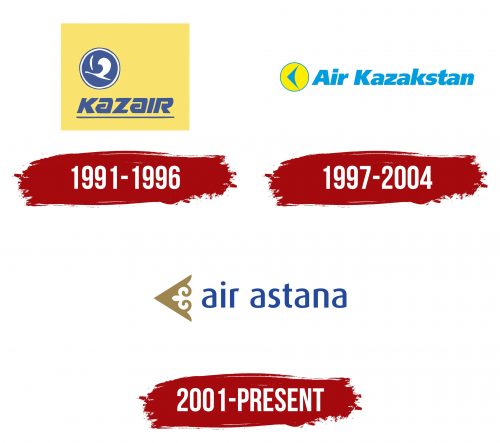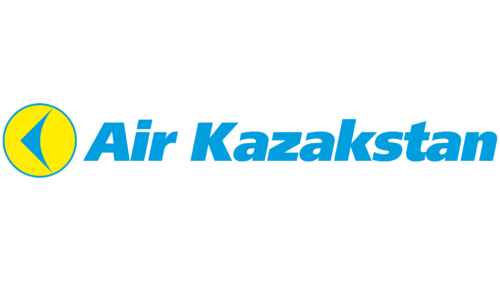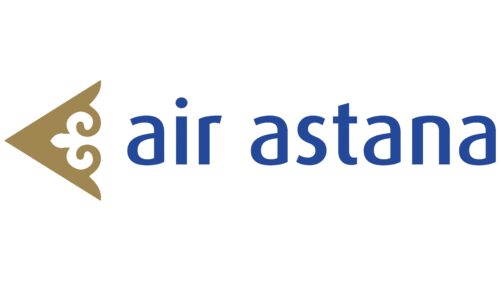The logo of Air Astana, Kazakhstan’s national carrier, embodies the airline’s mission to represent Kazakhstan internationally and enhance connectivity within and beyond Central Asia. It signifies the airline’s commitment to excellence and modernity, reflecting Kazakhstan’s goal to be recognized as a progressive and globally integrated nation. The logo highlights Air Astana’s role in connecting Kazakhstan’s growing economy with the world, supporting its tourism and business sectors. It captures the essence of Kazakh hospitality and the airline’s commitment to high-quality service, positioning Air Astana as a symbol of national pride.
Air Astana: Brand overview
Air Astana, established on September 14, 2001, through a partnership between the Kazakhstan government (holding 51% of shares) and British company BAE Systems (holding 49% of shares), marked a crucial milestone for Kazakhstan’s aviation industry and international connectivity. The collaboration with BAE Systems brought valuable international experience to Air Astana’s airline management.
On May 15, 2002, the airline commenced its first commercial flight from Almaty to Astana (now Nur-Sultan) using a Boeing 737, heralding a new era in Kazakhstan’s civil aviation. Initially focusing on domestic routes, the company expanded its operations in 2003 by introducing international flights to Dubai, Moscow, and Frankfurt, enhancing Kazakhstan’s global connections and competitiveness against foreign carriers.
Between 2004 and 2005, the airline underwent fleet modernization, acquiring Airbus A320 and A321 aircraft to enhance operational efficiency on medium-haul routes and elevate passenger service standards. By successfully passing the IATA Operational Safety Audit (IOSA) in 2006, the brand demonstrated compliance with international safety and service benchmarks, establishing itself as a reputable carrier in the region. Over the following years, the company expanded its route network, introduced new destinations in Asia and Europe, and increased flight frequencies to strengthen its position in the domestic and international markets.
In 2012, the airline’s move to order Boeing 787 Dreamliner aircraft signaled its ambition to grow its long-haul operations and establish a stronger presence in the global aviation market.
A significant rebranding in 2014, featuring a new logo and updated aircraft livery, highlighted the airline’s modernity while honoring Kazakh culture and identity. Subsequently, in 2015, the launch of its low-cost subsidiary aimed to diversify its market presence and cater to budget travelers. The introduction of the Airbus A321neo in 2018 further enhanced passenger service quality and operational efficiency.
By May 1, 2019, the brand introduced FlyArystan, its low-cost subsidiary, to operate domestic flights within Kazakhstan, capturing a new market segment and competing with regional budget carriers.
In response to the challenges caused by the global pandemic in 2020, the company has focused its operations on domestic and cargo operations, adapting to new challenges.
Meaning and History
What is Air Astana?
Since its establishment in 2001, Air Astana has served as Kazakhstan’s national airline. Operating from Astana and Almaty, it is the country’s leading airline, offering flights throughout Kazakhstan and to various international locations in Europe, Asia, North America, and Africa. Air Astana operates a fleet of over 40 aircraft and serves over 60 destinations. The airline is known for its excellent service quality, offering comfortable seating and a wide range of in-flight entertainment. As a OneWorld alliance member, the airline has earned numerous awards for its safety and service excellence.
1991 – 1996
Air Astana operated from 1991 to 1996 and designed a logo that reflected Kazakhstan’s national heritage. The logo centers around a yellow square, symbolizing the sun from Kazakhstan’s flag. This yellow represents the lightness and warmth of sunlight, emphasizing clear days and the country’s welcoming climate. It aims to convey simplicity and comfort for passengers.
The logo uses blue in the text and a circular emblem, traditionally linked to the sky and flight, enhancing thoughts of height, space, and freedom. Within this circle, a white bird resembling an eagle is depicted as a national symbol of strength, independence, and freedom in Kazakhstan. The design conveys these qualities, aiming to give passengers a similar sense of freedom during flight.
The airline’s name, “KAZAIR,” short for “Kazakhstan Air,” underscores its national significance. This name makes the brand recognizable internationally and reminds people of the airline’s origins and connection to Kazakhstan.
1997 – 2004
Air Kazakhstan recently updated its corporate image with a new logo that honors its past and looks to the future. The design retains the sun circle from the previous logo, symbolizing warmth, life, and prosperity, underscoring the airline’s ongoing development.
The logo features a schematic blue bird or airplane set against the sun circle, representing dual symbolism. The bird reflects freedom and aspiration, common themes in many cultures’ mythology. The shape also resembles an airplane, directly linking to aviation. Its triangular form suggests forward motion, dynamism, and the pursuit of new goals.
The company’s full name, “Air Kazakhstan,” follows the emblem in bold letters. Blue creates a light, airy feel reminiscent of the clear sky and endless flight possibilities. Meanwhile, the solid and clear lettering conveys weight and confidence, underscoring the airline’s reliability and professionalism.
2001 – today
Air Kazakhstan recently updated its emblem, replacing the familiar sun with an arrowhead to introduce dynamism and assertiveness. This change highlights the airline’s commitment to progress, innovation, and active forward movement. Inside the arrowhead, there’s an ornament similar to the patterns on Kazakhstan’s flag, underscoring the airline’s connection to its national cultural heritage and traditions.
The ornament in the logo represents Air Kazakhstan’s role as a carrier of Kazakhstan’s culture and history to the world. It symbolizes the airline’s ambition to spread the ideas and values of its homeland internationally, enhancing Kazakhstan’s image as a country rich in cultural heritage and unique traditions.
The sharp triangular shape of the arrowhead directs attention to the company’s focus on speed and purpose. This shape visually suggests rapid forward motion, representing the airline’s ambitions and determined pursuit of its goals.
The logo is completed with a light blue inscription harmonizing with the overall image. This shade of blue evokes the endless expanse of the sky, suggesting space, freedom, and limitless possibilities. It underscores the airline’s ties to the aviation industry while conveying the calmness and reliability essential for a comfortable and safe journey.
Font and Colors
The Air Astana logo features a simple yet elegant sans-serif font. The specific font resembles Aeonis Pro Condensed Bold or Afire Semi Bold, but its exact name is unknown as it may have been adapted or custom-designed for the company.
The letters are bold, making the name noticeable and easy to read. The spacing between the letters is even, allowing the name to be easily readable from a distance.
The logo’s color palette combines a deep blue with a golden hue. Blue is associated with reliability, professionalism, and trust, which are essential for an airline. Gold symbolizes quality, luxury, and high status, reflecting the company’s aim to provide first-class service.
The font and colors create an appealing and recognizable brand identity for Air Astana.
FAQ
Why is Air Astana so expensive?
Deputy Industry and Infrastructure Development Minister Almaz Ydyrysov explained in April that Air Astana’s ticket prices are considered high due to several factors. The main reason is the rising cost of jet fuel. Fuel prices are tied to the global oil market, and when they go up, the airline has to charge more for tickets to cover these costs.
Another significant expense is aircraft leasing. This allows Air Astana to use newer planes without buying them, but leasing is expensive and depends on the aircraft type and lease terms. Currency fluctuations affect the airline. As an international carrier, Air Astana uses various currencies. Suppose the Kazakhstani tenge falls against currencies like the US dollar or the euro, and costs for services like maintenance and parts increase. These expenses are typically passed on to customers through higher ticket prices.
Due to these factors, Air Astana’s operational costs are high. The airline must charge higher ticket prices to stay profitable and sustain operations.
Who owns Air Astana?
Air Astana is mainly owned by the Samruk-Kazyna National Welfare Fund JSC, which holds 51% of the airline. This fund is Kazakhstan’s sovereign wealth and investment arm, created to boost the national economy and develop key areas such as transportation and aviation. Owning a majority of Air Astana highlights the airline’s critical role in connecting Kazakhstan domestically and globally, supporting the country’s economic development.
How many stars does Air Astana have?
Air Astana has earned a 5-Star Airline Safety Rating from Skytrax, the highest level awarded by the airline and airport review organization. This rating places Air Astana among the world’s leading airlines for health and safety measures during the COVID-19 pandemic. The airline has introduced comprehensive safety initiatives, including strict cleaning procedures, enhanced air filtration systems, compulsory face masks, and social distancing protocols. These efforts highlight Air Astana’s dedication to providing a safe traveling environment for both passengers and staff during challenging times.







